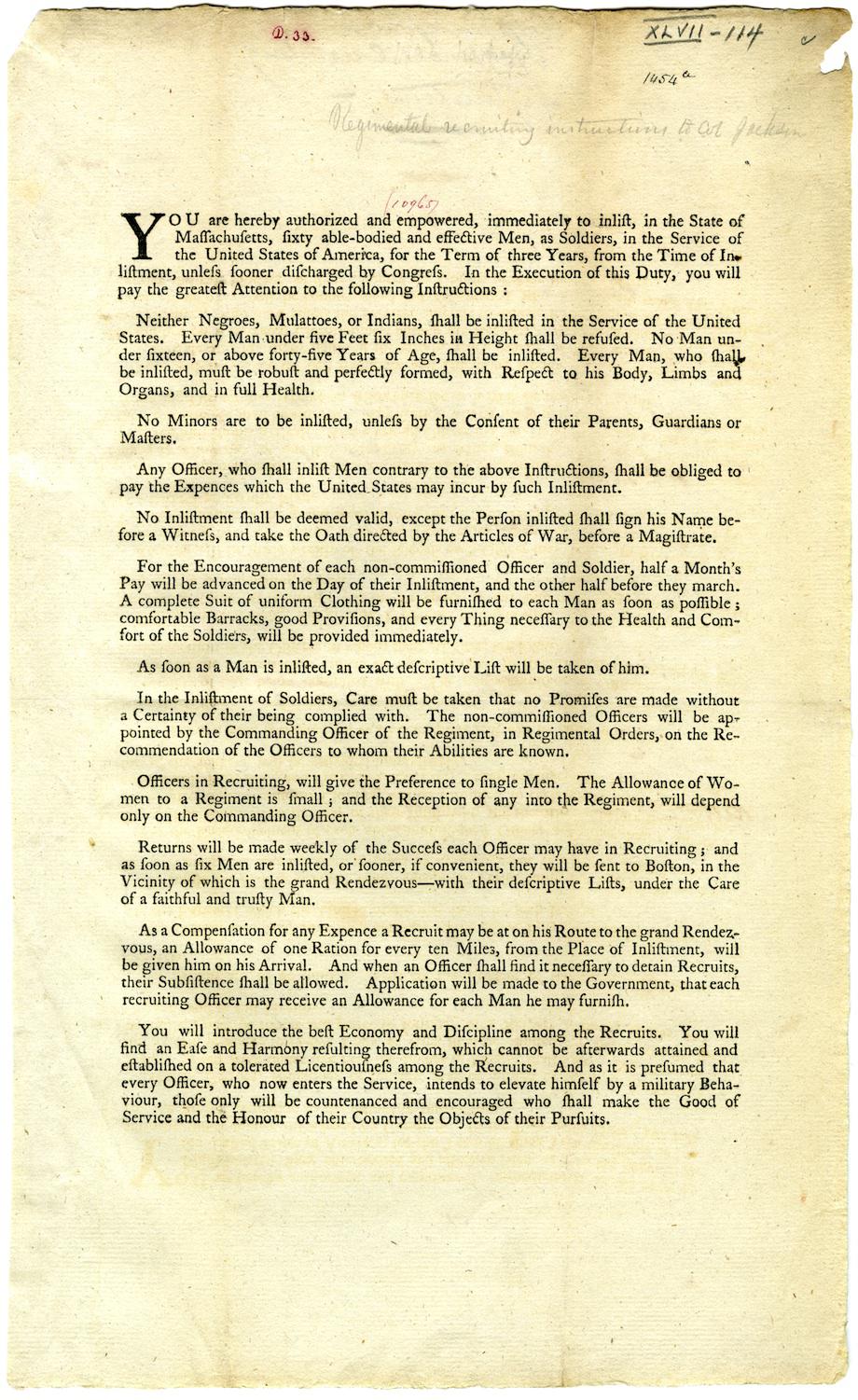The Vault is Slate’s new history blog. Like us on Facebook, follow us on Twitter @slatevault, and find us on Tumblr. Find out more about what this space is all about here.
This undated sheet, addressed to a “Col. Jackson,” issues instructions for enlistment of men in the Continental Army. The Gilder Lehrman Institute of American History, which holds the orders, believes that the addressee was Henry Jackson, who commanded various Massachusetts regiments between 1777 and 1784.
The document shows how, in the absence of a central structure for recruitment, officers of individual regiments were in charge of enlisting new soldiers and enforcing recruitment policy determined by the Continental Congress.
These orders begin by restricting enlistment by racial category: “Neither Negroes, Mulattoes, or Indians, shall be inlisted in the Service of the United States.” The reality of the Army’s composition was more complex. Historian Erna Risch writes that while we don’t know how many soldiers enlisted in the Army were black, “an initial policy of excluding” black soldiers from the Continental Army “soon gave way, under the pressure of manpower deficiencies, to one of accepting their service.” Black enlistees would probably have served as support staff, working as cooks or orderlies.
The mention of the small “Allowance of Women to a Regiment” refers to a phenomenon that George Washington and the Army’s leaders found most vexing: Some wives followed their husbands into the service as an alternative to an impoverished life at home.
In 1777, Washington wrote that such women, who often earned their keep by doing laundry and nursing, were “a clog upon every movement,” and entreated his officers to “use every reasonable method in their power to get rid of all such as are not absolutely necessary.” By restricting recruitment to single men whenever possible, Col. Jackson and the other officers could avoid such problems altogether.
The promises to the enlisted—a “complete Suit of uniform Clothing,” “comfortable Barracks, good Provisions, and every Thing necessary to the Health and Comfort of the Soldiers”—eventually became difficult to fulfill. As Risch writes, the Army faced serious logistical issues as the war stretched on: Rations were cut, pay delayed, and uniforms became less than uniform.

GLC02437.08189 [Rules for enlisting men for service], ca. 1777-1786. Courtesy of the Gilder Lehrman Institute of American History.